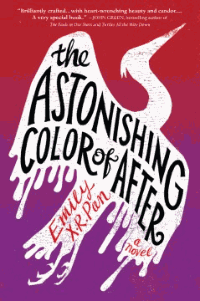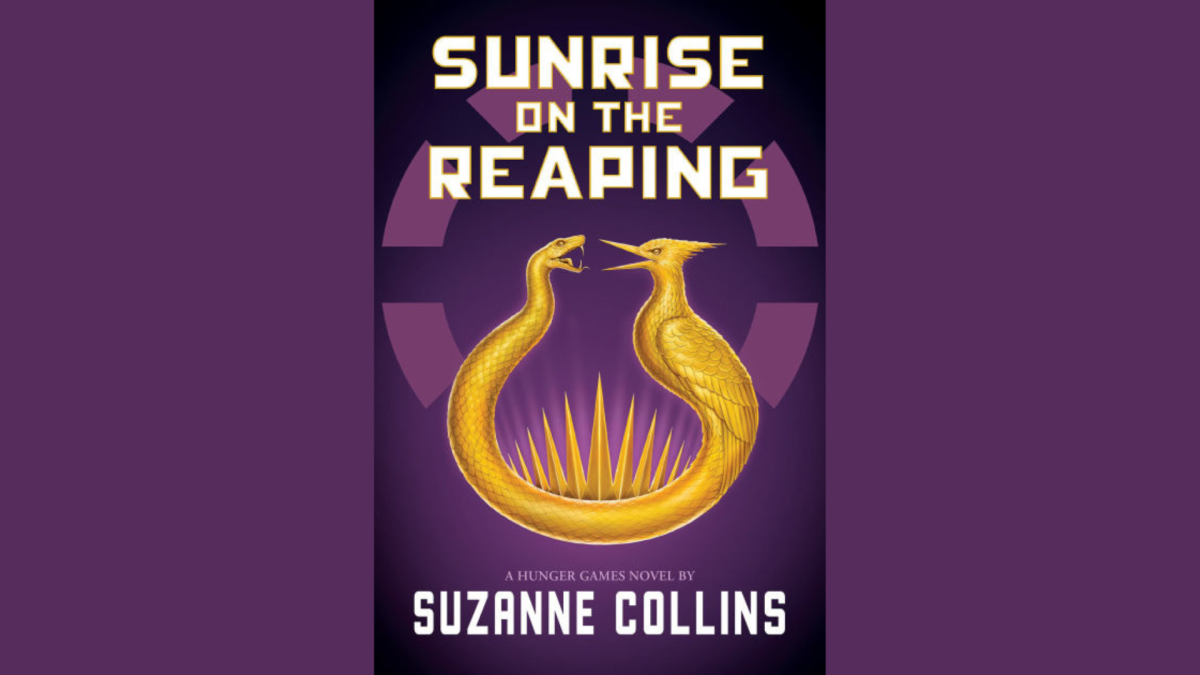‘The Astonishing Color of After’ is so much more than a book

“The Astonishing Color of After” by Follett, TitlePeek, Accessed 15 Nov. 2018.
“The Astonishing Color of After” follows Leigh Chen Sanders as she travels to Taiwan after her mother’s sudden suicide.
November 15, 2018
When I picked up “The Astonishing Color of After,” I felt as though I was picking up a light read, despite the premise of the book being centered around the suicide of the main character’s mother. I thought I knew what I was getting: a tale of loss and redemption, with some magic sprinkled in to fix the problem.
The only problem? I completely misjudged the book (yes, based on its cover).
Emily X.R. Pan’s debut novel “The Astonishing Color of After” is a shining literary gem that may very well change how you view the world. It follows Leigh Chen Sanders as she navigates the world after her mother death, absolutely convinced that her mother was reincarnated as a bird. Along the way, we meet a cast of rich and intensely deep characters like her friends, Axel and Caro; her grandparents, Waipo and Waigong and many others.
After the death of her mother, Dory, Leigh convinces her father to take her to Taiwan find the bird that used to be her mother and visit her maternal grandparents who she has never met before. While she learns about her grandparents and her mother in Taiwan, flashbacks begin to fill in Leigh’s own story leading up to her mother’s death. In the present, we watch as Leigh scrambles to find her mother while dredging up memories of the past that have been long since locked away.
The best part about this novel is the unflinching way it portrays Dory’s depression. Mental illness is often misrepresented or glossed over in media. The topic is confusing, murky and not easy to discuss, but Pan does us all a favor by not sugarcoating anything. Leigh’s flashbacks show Dory’s depression as realistically as possible — meaning it is unpredictable and devastating not only to her, but to her husband and Leigh as well. But Dory is not her depression. We see her as a loving, attentive mother and wife who happens to get struck by bouts of sickness. This is especially important to show that people with mental illness should not be defined by their disease because then you’d miss the person struggling underneath.
But “The Astonishing Color of After” is about so much more than depression. It’s about first loves, learning to respect the past, identity and the importance of family. The expanse of topics that Pan teaches her audience about is frankly amazing. If I knew how many elements the book would touch on beforehand, I would have been concerned. How could a book say so much without being unfocused? And while I will concede that the book read more like a draft than a published novel, Pan does an extraordinary job of weaving all of her complex morals together in a single story.
This book tore down every expectation I had for it and made me look at life in a whole new way. If you are looking for a book, you should get your hands on this book as fast as you can. This book is like nothing you have ever read before, and you would be sorry to pass it by.






